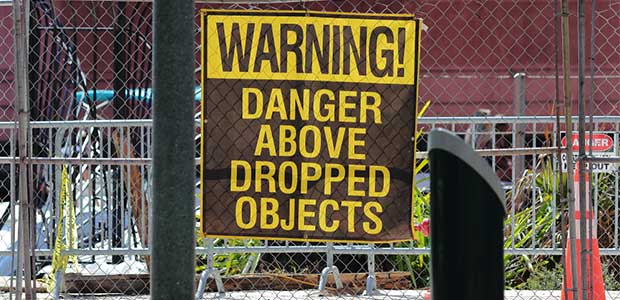
The Dangers of Dropped Objects
Tools are essentially for workers at height to do their job, but they also pose risks to those below.
- By Anne Osbourn
- Jun 01, 2020
By now, we are all familiar with the dangers that working at heights poses to our workers. Compliance goes up every year as more workers don harness and tie off when they’re high above the ground. The key to remember is that each man or woman up on the top of a skyscraper is there doing a job, and likely requires tools to finish the work.
Those tools pose an additional danger to those below, as accidents happen when they are dropped. In 2017, 278 fatalities occurred from being “struck by falling objects” according to the Bureau of Labor Statistics. As a Safety Manager, ANSI/ISEA 121-2018 helps you better protect your workers.
ANSI/ISEA 121-2018 Standardizes Dropped Object Prevention
ANSI/ISEA 121-2018 is written in order to provide the industry with a standard method for designing, testing and labelling products for the prevention of dropped object incidents. On your worksite, a dropped object could be anything from hand tools to small parts to instruments. Really, almost anything that a worker could be handling while they are working at heights. These items may seem like they wouldn’t be dangerous, but imagine the damage that they could inflict falling from three stories above you.
Actual products covered by the standard are broken into two categories for the purposes of testing. There are many different products in each category, and selection becomes critical to properly protect your workers.
Tool Tethers
First, there is the Anchor Attachment (A). This is the secure attachment point to the anchorage. For a tool tether, an anchor could be your workers wrist, loops on a harness waist pad or even the railing of a lift.
Second is the Tool Attachment (B). Similar to the anchor attachment, the tool attachment provides the secure attachment point to the tool in your worker’s hand. There are a variety of different options depending on the tool.
Finally, there is the Tether (C). The tether connects your tool to the anchorage and is designed to support tools of a specific weight.
Containers
The second product category covers all containers. Containers are used to prevent smaller objects like nuts and bolts from being dropped. There are two main categories of containers covered by the standard. First there are small bags, meant to be attached to a worker’s tool belt or harness waist pad. Second are larger bags that would be hoisted up to the worksite and may be attached to scaffolding, a lift or other stationary anchors.
Choose the Right Product for Your Workers
Now that we are familiar with the products covered by ANSI/ISEA 121-2018, it is important to figure out how to choose the right equipment for the job. By asking these few simple questions, safety managers can identify the right product to keep your workers safe.
1. What tools do your workers need to carry? This helps you identify two key characteristics to the hazard. First, you need to know what type of tether attachment that you will need. If your tool handle has a hole at the end of the tool, then consider a carabiner or hitch loop. If not, you will need a tether that has a permanent attachment method. On the other hand, a container is needed if your worker has to hold many small items.
The second thing to note about your workers tool is the weight. Each tool tether is designed and tested for a specific test weigh range, so it’s important to select a tether rated for the tools your worker is using.
2. What anchor will your worker use? On the other end of the tether, we need to know how your worker will anchor it. If your worker is wearing a harness or tool belt with proper attachment points, you should select a tether with a hitch loop or carabiner. If your worker doesn’t have access to a built-in attachment point, then consider a wrist strap instead. If your worker cannot anchor to their person, then consider utilizing a stationary anchor such as scaffolding or the railing of a lift.
3. What range of motion does your worker need? Tool tethers come in different lengths. You want to be sure to select a length that allows your workers to do their job. The safest tool tether is one that your worker will use!
This article originally appeared in the June 2020 issue of Occupational Health & Safety.